Abstract
In this chapter we describe experience in the design and installation of a low-cost multi-touch table in a rural island community. We will discuss the creation of the table including: pragmatic challenges of installation, and then re-installation as the physical fabric of the multi-purpose building (café, cinema, meeting area and cattle market) altered; technical challenges of using off-the-shelf components to create state-of-the art multi-touch interactions and tactile BYOD (bring your own device) end-user programming; design challenges of creating high-production value bespoke mountings and furniture using digital fabrication in an environment that could include sewing needles, ketchup laden sandwiches and cow manure. The resulting installation has been used in semi-in-the-wild studies of bespoke applications, leading to understandings of the way small communities could use advanced interactions. More broadly this sits within a context of related studies of information technology in rural developments and a desire to understand how communities can become users of the rich streams of open data now available, and, perhaps more important, offer ways in which small communities can become empowered through the creation and control of their own data.
Keywords: touch-table, rural community, open data, research in the wild
References
- Argyll and Bute Council (2016). Understanding Argyll and Bute. https://www.argyll-bute.gov.uk/understanding-argyll-and-bute#deprivation. Accessed 27/2/2016.
- Bailey, N., Spratt, J., Pickering, J., Goodlad, R. and Shucksmith, M. (2004). Deprivation and social exclusion in Argyll and Bute. Report to the Community Planning Partnership. Scottish Centre for Research on Social Justice, Universities of Glasgow and Aberdeen, February 2004
- Bellucci, A., Malizia, A. and Aedo, I. (2011). TESIS: Turn Every Surface into an Interactive Surface. In Proceedings of the ACM International Conference on Interactive Tabletops and Surfaces.
- Bellucci, A., Malizia, A. and Aedo, I. (2014). Light on horizontal interactive surfaces: Input space for tabletop computing. ACM Comput. Surv. 46(3): 32.
- Bonnard, Q., Lemaignan, S., Zufferey, G. and Mazzei, A. (2013) Chilitags 2: Robust fiducial markers for augmented reality and robotics. http://chili.epfl.ch/software. Accessed 27/6/2016.
- Bucciarelli, Louis L. (1984). Reflective practice in engineering design. Design Studies, vol. 5, no. 3, MIT Press.
- Chamberlain, A., Malizia, A & Dix, A. (2014). Visual and Tactile Engagement: designing projected touch-surfaces for community use in a rural context’, AVI 2014, the 12th International Conference on Advanced Visual Interfaces, Como (Italy), May 27-30, ACM Press. Doi:10.1145/2598153.2598202
- Chamberlain, A., Malizia, A & Dix, A. (2013) Engaging in Island Life: big data, micro data, domestic analytics and smart islands. HiCUE 2013: Workshop on Human Interfaces for Civic and Urban Engagement, Ubicomp 2013, Zurich, Switzerland, ACM Press. Doi:10.1145/2494091.2495994
- Checkland, P. and Poulter, J. (2006). Learning for Action: A Short Definitive Account of Soft Systems Methodology and its use for Practitioners, John Wiley and Sons Limited.
- Danado, J. and Paternò, F. (2012). Puzzle: a visual-based environment for end user development in touch-based mobile phones, Proceedings of the 4th international conference on Human-Centered Software Engineering.
- Dix, A. (1990). Information processing, context and privacy. (Eds.) D. G. D. Diaper G. Cockton & B. Shakel Human-Computer Interaction - INTERACT'90,. North-Holland. pp. 15-20. http://alandix.com/academic/papers/int90/
- Dix, A. and Sas, C. (2010). Mobile Personal Devices meet Situated Public Displays: Synergies and Opportunities. International Journal of Ubiquitous Computing (IJUC), 1(1), pp. 11-28. http://alandix.com/academic/papers/MPD-SPD-2010/
- Dix, A. (2011). In praise of inconsistency - the long tail of small data. Distinguished Alumnus Seminar, University of York, UK, 26th October 2011. http://www.hcibook.com/alan/talks/York-Alumnus-2011-inconsistency/
- Dix, A. (2013). Mental Geography, Wonky Maps and a Long Way Ahead. GeoHCI, Workshop on Geography and HCI, CHI 2013.
http://alandix.com/academic/papers/GeoHCI2013/ - Dix, A. (2014). Open Data Islands And Communities. http://tireetechwave.org/projects/open-data-islands-and-communities/. Accessed 27/6/2016.
- FabLab (2016). FabLab Cardiff. http://www.fablabcardiff.com/. Accessed 27/6/2016.
- Gill, S. and Dix, A. (2012). The Role of Physicality in the Design Process, (Eds.) Adenauer, J. and Petruschat, J. Prototype! physical, virtual, hybrid, smart – tackling new challenges in design and engineering. Form+ Zweck
- Hammersley and Atkinson (1994). Ethnography: Principles and Practice, Raithledge
- Han, J. Y. (2005). Low-cost multi-touch sensing through frustrated total internal reflection. Proceedings of the 18th annual ACM symposium on User interface software and technology, pp. 115-118..
- Heath, T and Bizer, C. (2011). Linked Data: Evolving the Web into a Global Data Space (1st edition). Synthesis Lectures on the Semantic Web: Theory and Technology, 1:1, 1-136. Morgan & Claypool.
- Hosio, S., Goncalves, J., Kukka, H., Chamberlain, A. and Malizia, A. (2014). What's in it for me: Exploring the Real-World Value Proposition of Pervasive Displays, Proceedings of The International Symposium on Pervasive Displays.
- Howarth, B. (2014). Big data: how predictive analytics is taking over the public sector. Guardian, 13th June 2014. http://www.theguardian.com/technology/2014/jun/13/big-data-how-predictive-analytics-is-taking-over-the-public-sector. Accessed 27/6/2016.
- Kaltenbrunner, M., Bovermann, T., Bencina, R., & Costanza, E. (2005). TUIO: A protocol for table-top tangible user interfaces. Proc. of the The 6th Int’l Workshop on Gesture in Human-Computer Interaction and Simulation
- Longley, P. and Singleton, A. (2009). Linking Social Deprivation and Digital Exclusion in England. Urban Studies, June 2009 vol. 46 no. 7 1275-1298. doi: 10.1177/0042098009104566
- Loudon, G., Deininger, G. and Wilgeroth, P. (2012). The Importance of Play and Creativity in the Design Curriculum, International Conference on Engineering and Product Design Education, Antwerp, 6th – 7th September, 2012
- Luchs, M., Swan, S. and Griffin, A. (2015). Design Thinking: New Product Development Essentials from the PDMA, Wiley-Blackwell
- Nesta (2014). Open Data Scotland. http://www.nesta.org.uk/project/open-data-scotland. Accessed 27/6/2016.
- Open Data Institute (2015). Open data roadmap for the UK – 2015. http://theodi.org/roadmap-uk-2015. Accessed 27/6/2016.
- Open Knowledge Foundation (2016). Open Data Handbook. Accessed 27/2/2016. http://opendatahandbook.org
- OpenNI (2016). OpenNI Resource Page. http://structure.io/openni. Accessed 27/6/2016.
- Rogers, Y., Lim, Y. and Hazlewood, W. (2006). Extending Tabletops to Support Flexible Collaborative Interactions. Proceedings of Tabletop 2006, IEEE, Adelaide, Australia, January 5-7th, 2006. pp. 71-79.
- Royal Society of Edinburgh (2013). Spreading the Benefits of Digital Participation: An Interim Report for Consultation. Edinburgh: Royal Society of Edinburgh, pp. 22–24.
- ReacTIVivsion (2016). ReacTIVision – a toolkit for tangible multi-touch surfaces http://reactivision.sourceforge.net. Accessed 27/6/2016.
- Shadbolt, N. Hall, W. and Berners-Lee, T. (2006). The Semantic Web Revisited. IEEE Intelligent Systems.
- Simm, W., Ferrario, M., Friday, A., Newman, P., Forshaw, S., Hazas, M. and Dix, A. (2015). Tiree Energy Pulse: Exploring Renewable Energy Forecasts on the Edge of the Grid. Proceedings of the 33rd Annual ACM Conference on Human Factors in Computing Systems. ACM, New York, NY, USA, 1965-1974. DOI:10.1145/2702123.2702285
- Squires, S. and Byrne, B. (eds) (2002). Creating Breakthrough Ideas: The Collaboration of Anthropologists and Designers in the Product Development Industry, Greenwood Press
- Storz, O., Friday, A., Davies, N., Finney, J., Sas, C. and Sheridan, J. (2006). Public Ubiquitous Computing Systems: Lessons from the e-Campus Display Deployments. IEEE Pervasive Computing 5, 3, 40-47. DOI= 10.1109/MPRV.2006.56
- Terrenghi, L., Quigley, A. and Dix, A. (2009). A taxonomy for and analysis of multi-person-display ecosystems. Journal Personal and Ubiquitous Computing, Springer, 13(8):583–598, DOI: 10.1007/s00779-009-0244-5
- Turchi, T., Malizia, A. and Dix, A. (2015). Fostering the Adoption of Pervasive Displays in Public spaces using Tangible End-User Programming. IEEE Symposium on Visual Languages and Human-Centric Computing, At Atlanta, Georgia, US. 18-22 Oct 2015
- Wellner, P. (1993). Interacting with paper on the DigitalDesk. Commun. ACM 36, 7, 87-96. DOI: 10.1145/159544.159630
- Wigdor, D. and Wixon, D. (2011). Brave NUI World: Designing Natural User Interfaces for Touch and Gesture (1st ed.). Morgan Kaufmann Publishers Inc.
- Wilson, A. (2010). Using a depth camera as a touch sensor. ACM international conference on interactive tabletops and surfaces, pp. 69-72.
- Ulrich, K. and Eppinger, S. (2011). Product Design and Development. McGraw-Hill Higher Education
|
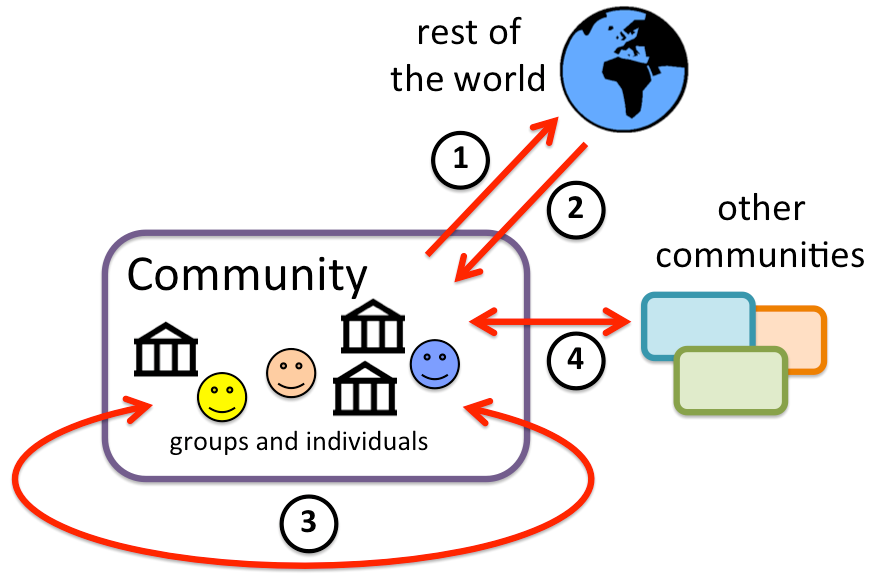
Fig. 20.1 Open data islands and communities—data flows
[zoom image]
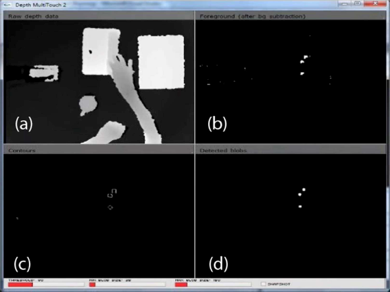
Fig. 20.2 TESIS using depth information to enable touch input a raw depth map; b subtract background and threshold to points within
small distance of surface; c transform to connected regions; d recognized touch points
[zoom image]
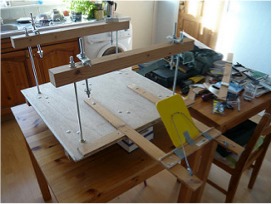
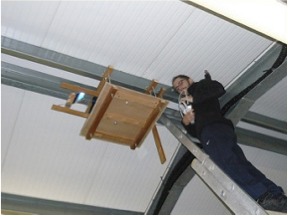
Fig. 20.3 Phase 1, (left) projector platform being constructed, note mirror cantilevered from the
platform, and (right) installation at 5 m apex of Rural Centre roof
[zoom image 1] [zoom image 2]
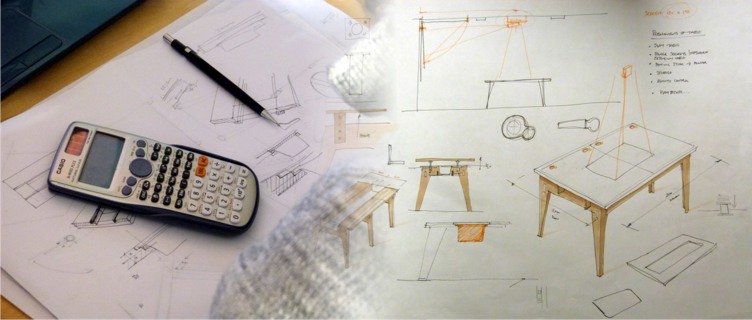
Fig 20.4 Sketch development work
[zoom image]
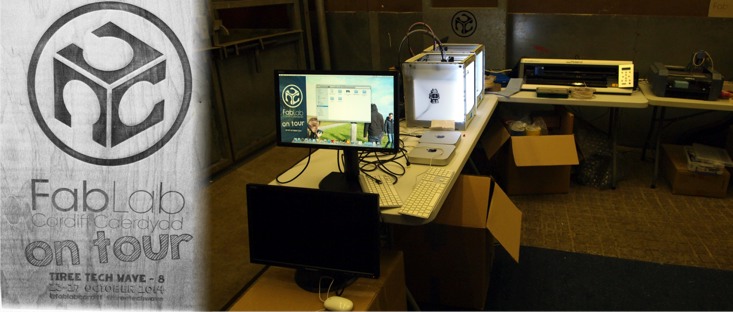
Fig. 20.5 FabLab Cardiff in the Tiree Rural Centre Cattle Market/Cinema
[zoom image]
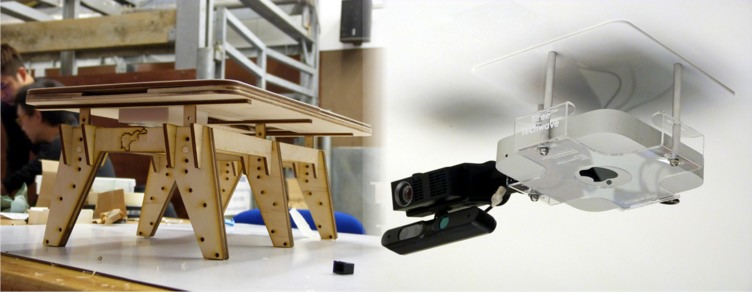
Fig 20.6 Finished table model and projection module
[zoom image]

Fig. 20.7 The full-sized table in situ
[zoom image]
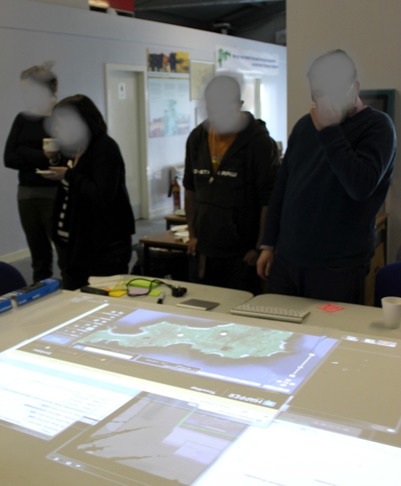
Fig. 20.8 Participants gathered around the tabletop display. Sometimes they split into small groups to discuss topics
[zoom image]
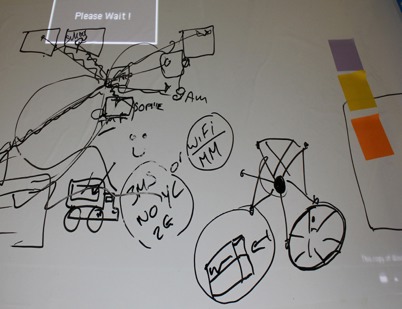
Fig. 20.9 Illustrations drawn
directly on the projected
surface (projection turned off)
[zoom image]
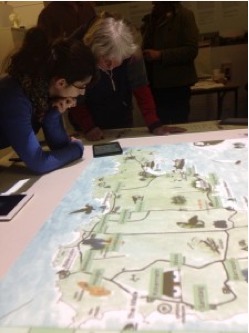
Fig. 20.10 Discussion around the map at the Frasan launch
[zoom image]